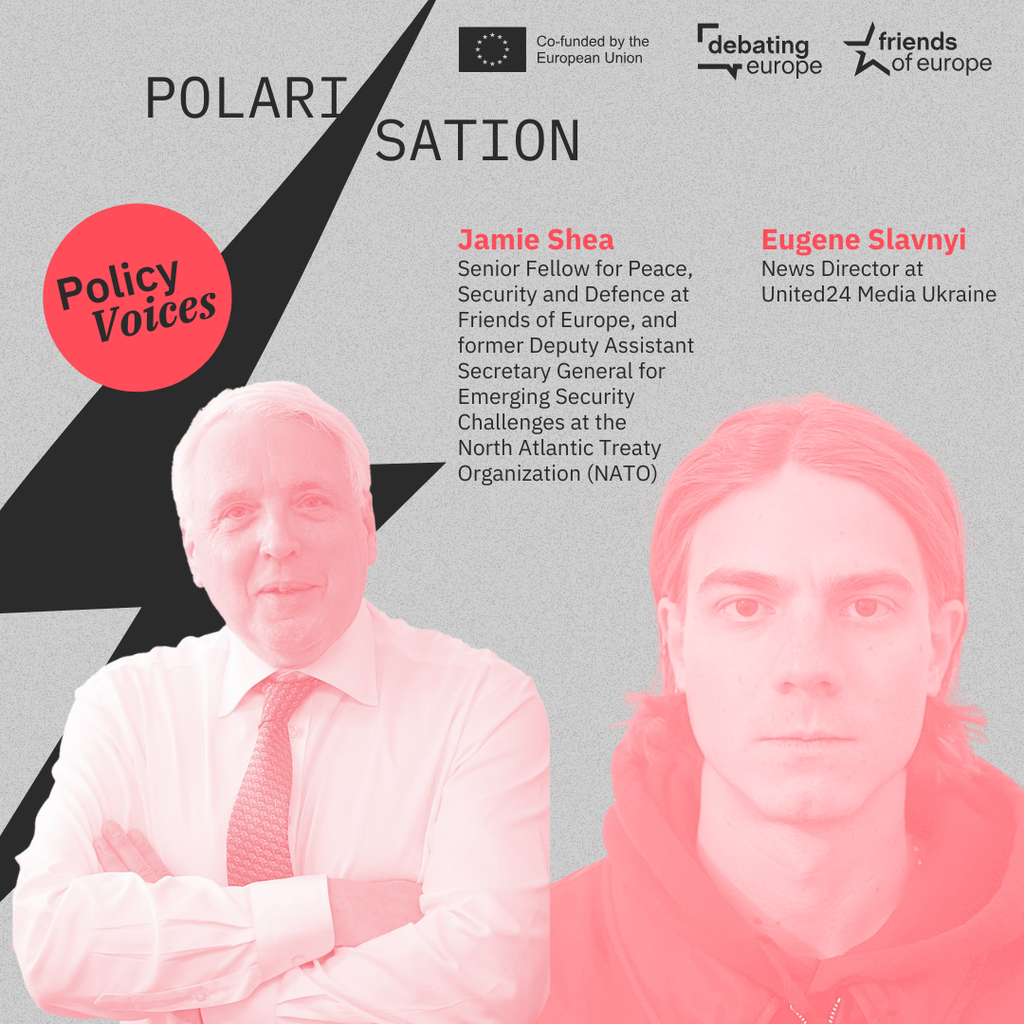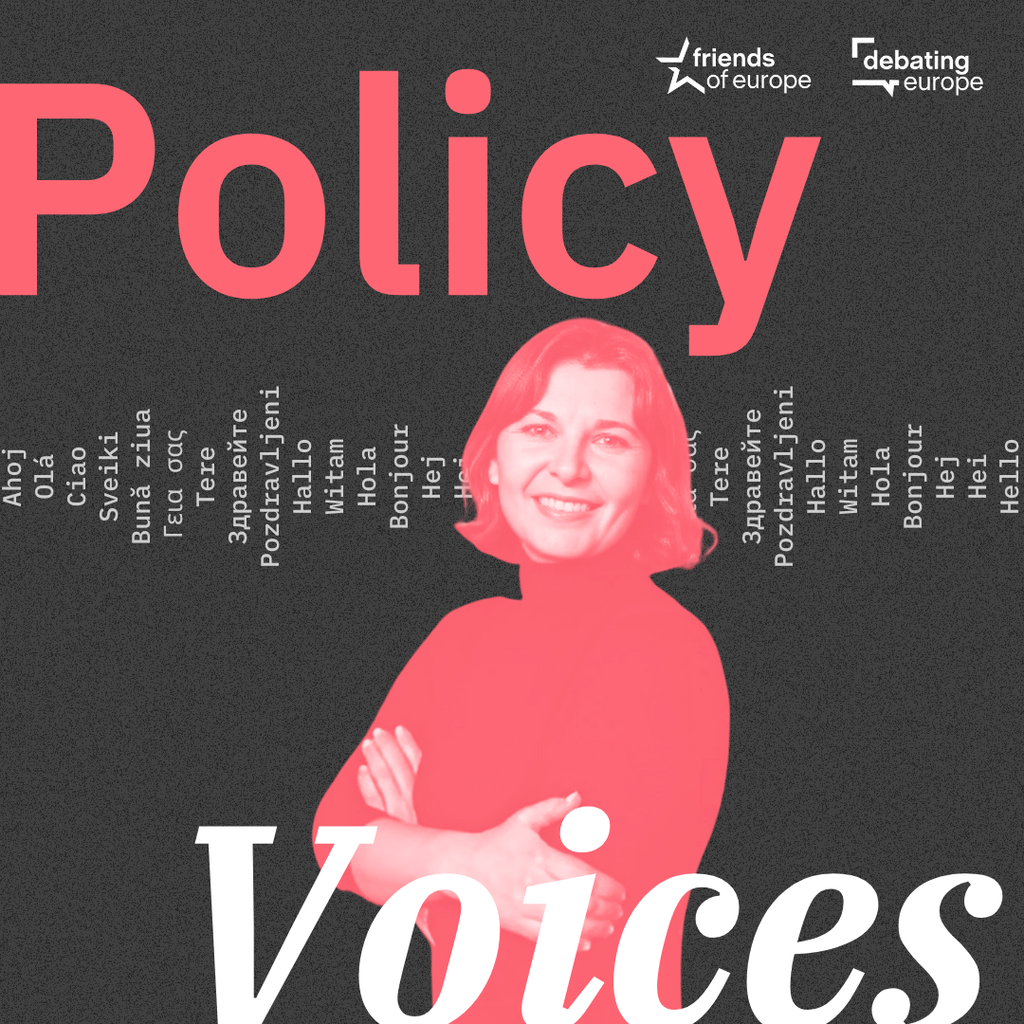From ambition to action: building Europe’s Defence Union
Past event In person

- Area of Expertise
- Peace, Security & Defence
Peace, Security & Defence

Senior Fellow for Peace, Security and Defence at Friends of Europe, and former Deputy Assistant Secretary General for Emerging Security Challenges at the North Atlantic Treaty Organization (NATO)
Rahm Emmanuel, the former chief of staff to President Obama and mayor of Chicago, was fond of telling his boss that he should “never let a good crisis go to waste”. The word “crisis” in Chinese also translates as opportunity. The international institutions that will emerge successfully from the current COVID-19 crisis will not only be those that act swiftly and usefully, but also which use the crisis to adapt their missions and their business models.
So far NATO is indeed having a good crisis, which may seem surprising as the alliance has never referred to pandemics in its list of emerging security challenges nor the various strategic concepts that it has developed since the end of the Cold War. New threats for NATO have been more in the realms of cyber-attacks, energy cut-offs, terrorism and state-driven hybrid campaigns. NATO’s forte has always been to focus on the man-made, human-driven threats to the future of humanity rather than those originating from natural causes.
Yet already in recent times the security implications of climate change were beginning to change this calculus, as evidenced by a spate of extreme weather events calling out the armed forces to fight floods and forest fires rather than Russians or jihadists. Indeed, on the eve of the outbreak of the COVID-19 pandemic, NATO ambassadors were planning their first away-day to brainstorm on climate change as a driver of security threats. Now coronavirus will force NATO’s leadership to review how the disruptive impact of natural disasters will complicate the alliance’s traditional missions as well as compel it to take on new ones.
Given the universality of the coronavirus, NATO has to defend all 30 of its equally-stricken member states all at once
In the first place, collective defence is being re-interpreted to mean solidarity in upholding domestic order and resilience rather than mainly protecting external borders. This change was already foreshadowed back in 2014 when NATO’s leaders proclaimed that a cyber-attack against an ally could be considered as an armed attack and trigger a collective response under Article 5 of the NATO treaty. In doing so, the alliance raised to the level of a treaty commitment for the first time a threat that was societal rather than military, which could impact the private sector as much as the state, and which was not based on physical violence or a kinetic effect.
Yet in taking this decision six years ago, NATO leaders were still thinking of potential retaliation against a state aggressor once its actions could be reliably identified. Coronavirus on the other hand is largely an invisible threat than can come from anywhere and which can be just as destructive as of a deliberate act of aggression, only without anyone being criminally or legally responsible. So, NATO’s defence responsibility in this new area is not founded on the promise of retaliation but on the promise of assistance and recovery. It is keeping its member states safe from within rather than without.
Moreover, any previous act of aggression was based on the notion that only a few NATO allies would be stricken by an attack and the other allies, less afflicted, would come to their help. Estonia, for instance, was the only ally to be crippled by a cyber-attack in 2007 and the United States the only ally to be targeted by Al Qaeda on 9/11 (when the alliance invoked its Article 5 defence clause for the first time in its 70 year history). Yet now, given the universality of the coronavirus, NATO has to defend all 30 of its equally-stricken member states all at once. This is totally new.
NATO’s foreign ministers – who met last week for the first time by video conference – can be satisfied with the organisation’s initial response. The Euro-Atlantic Disaster Response Coordination Centre has served as a clearinghouse to transport vital medical supplies from one ally to another. Turkey and the Czech Republic have flown equipment to Italy and Spain. NATO’s C17 heavy-lift aircraft based in Hungary have transported supplies to Romania. NATO civil response experts have coordinated logistics and communications. Yet rather than simply repeat these positive news stories, the foreign ministers should use this opportunity to see what more NATO can contribute.
NATO has highly professional military forces to buttress national resilience but they are useless if they cannot be used
For instance, the Supreme Allied Commander, Europe (SACEUR) could be tasked to establish an airlift capability to transport troops from one ally to another quickly if they are needed to help national armed forces to deal with the crisis, such as establishing field hospitals or transferring patients or transporting the dead for burial. The UK military has built the Nightingale hospital in an exhibition centre in East London with a capacity of up to 4,000 beds and is now building similar facilities in other UK cities.
This type of expertise could be useful in other allied countries, for instance in Eastern Europe and the Balkans where the national health and disaster response services are less developed. SACEUR could be tasked with drawing up an alliance-wide contingency and resilience plan to track the likely evolution of COVID-19 to the end of the year and identify the vulnerable points, and likely needs for assistance. On this basis, SACEUR can plan with the allies to generate the required force packages and ensure that they are trained, equipped and certified for disease control deployments.
NATO has highly professional military forces to buttress national resilience but they are useless if they cannot be used, and so another urgent task is to better protect NATO’s forces against disease and biological agents. The military have proven no more resilient to coronavirus than the civilian population. A US nuclear-powered aircraft carrier is out of action in Guam with a crew of 4,000 stricken with the virus. A Dutch submarine has had to return home and two German corvettes have stopped operation. Navies with their personnel working at close quarters seem to be particularly vulnerable to diseases. Meanwhile, allies have been withdrawing their contingents home early from important overseas missions in Afghanistan and Iraq. So, for the first time, allies have to choose between deploying their troops at home or abroad.
The future operating environment will therefore probably see armed forces being more evenly distributed between home and overseas duties. This implies more stress, a higher operational tempo and less training and recovery time. NATO consequently will need to overhaul its operational planning to be much more responsive to sudden crises and rapid force redeployments.
A challenge for the alliance will be to prevent adversaries from exploiting this newfound preoccupation with domestic resilience
For instance, if a Dutch submarine has to suddenly go into quarantine, who will replace it, and how quickly? If a French training company is pulled out of Iraq, how can the gap be filled before the training activity suffers? If military medics or chemical, biological, radiological and nuclear (CBRN) decontamination units are sent home from the Baltic states without warning, how much reserve and deployable capability does NATO have in its inventory? Can all alliance deployed forces have a backup, rather like the understudy soprano in an opera, to fill the space if they become ill or are re-assigned?
Looking to the future, NATO will also need to re-think the concept of force protection. Up to now it has largely meant the protection of soldiers against improvised explosive devices or of bases against rocket attack. In the future, military planners will need to think of ways to improve soldiers’ hygiene, rapid access to protective clothing, separation techniques, vaccination and training and exercise schedules to learn to operate in disease-infested environments without rapid loss of operational effectiveness.
Finally, a challenge for the alliance will be to prevent adversaries from exploiting this newfound preoccupation with domestic resilience. In the age of hybrid warfare, adversaries do not need to carry out attacks to inflict damage. It is enough to exploit opportunities to increase their influence and undermine public trust in NATO solidarity. Russia has sent medical supplies to Northern Italy using military aircraft. These may not be especially useful but the gesture has given Russia the opportunity to set up a military cell in Bergamo, close to the NATO airbase in Vincenza. It could be used for intelligence gathering or to observe NATO operations at close quarters. China has also been opportunistically sending medical supplies to Italy and Spain to rebrand its image at a time when its own transparency in handling the coronavirus outbreak is open to scrutiny.
Cyber-attacks and disinformation campaigns are on the increase, while this battle of the PR narrative goes on in official government pronouncements. Consequently, NATO’s developing role in societal resilience also has to involve the virtual and societal domains as much as the physical domain of transport flights and field hospitals. Solidarity also means helping allies to counter false claims and unwelcome foreign influence. It needs to work closely with the European Union and national intelligence agencies to spot deliberate influence campaigns.
It will be an uphill struggle to resource existing missions and to keep the front-line forces fighting-fit
A line must also be drawn between genuine humanitarian gestures and outright attempts at political manipulation. If NATO does a lot but receives little visibility and recognition while Russia and China hype a few aid flights and donations to portray themselves as the saviours in our hour of need, then clearly this lesson will not have been learned. The NATO foreign ministers can ask the NATO Secretary-General and the EU High Representative to produce a monthly report on the political exploitation of the health crisis with geopolitical implications for the EU and NATO, and recommendations for joint or at least coordinated responses
The NATO Secretary-General, Jens Stoltenberg, is fond of saying that “we must not allow the health crisis to become a security crisis”. Yet it is already a security crisis as governments will be over-burdened for months managing the fallout from the virus. Defence budgets will be compressed and responses to foreign crises will be constrained. It will be an uphill struggle to resource existing missions and to keep the front-line forces fighting-fit.
The NATO of the future will have to find a new balance between defending a few of its member states at any one time against man-made threats, versus scenarios where potentially all member states are at risk from natural disasters. This is a heavy agenda, but the prospect of future pandemics as well as extreme weather events driven by global warming means it is one that cannot be avoided.
Last week, Jens Stoltenberg announced the names of his group of experts who will come up with ideas to improve NATO’s political consultations and machinery at the request of France and Germany. But the valuable time of these distinguished individuals and the money devoted to their review might be much more usefully spent in analysing the strategic implications of COVID-19 for the future of the alliance instead.
Past event In person

Next event

Past event Online

Past event Online





Stay informed
We use cookies and similar technologies to adjust your preferences, analyze traffic and measure the effectiveness of our campaigns. Learn more about our privacy policy.